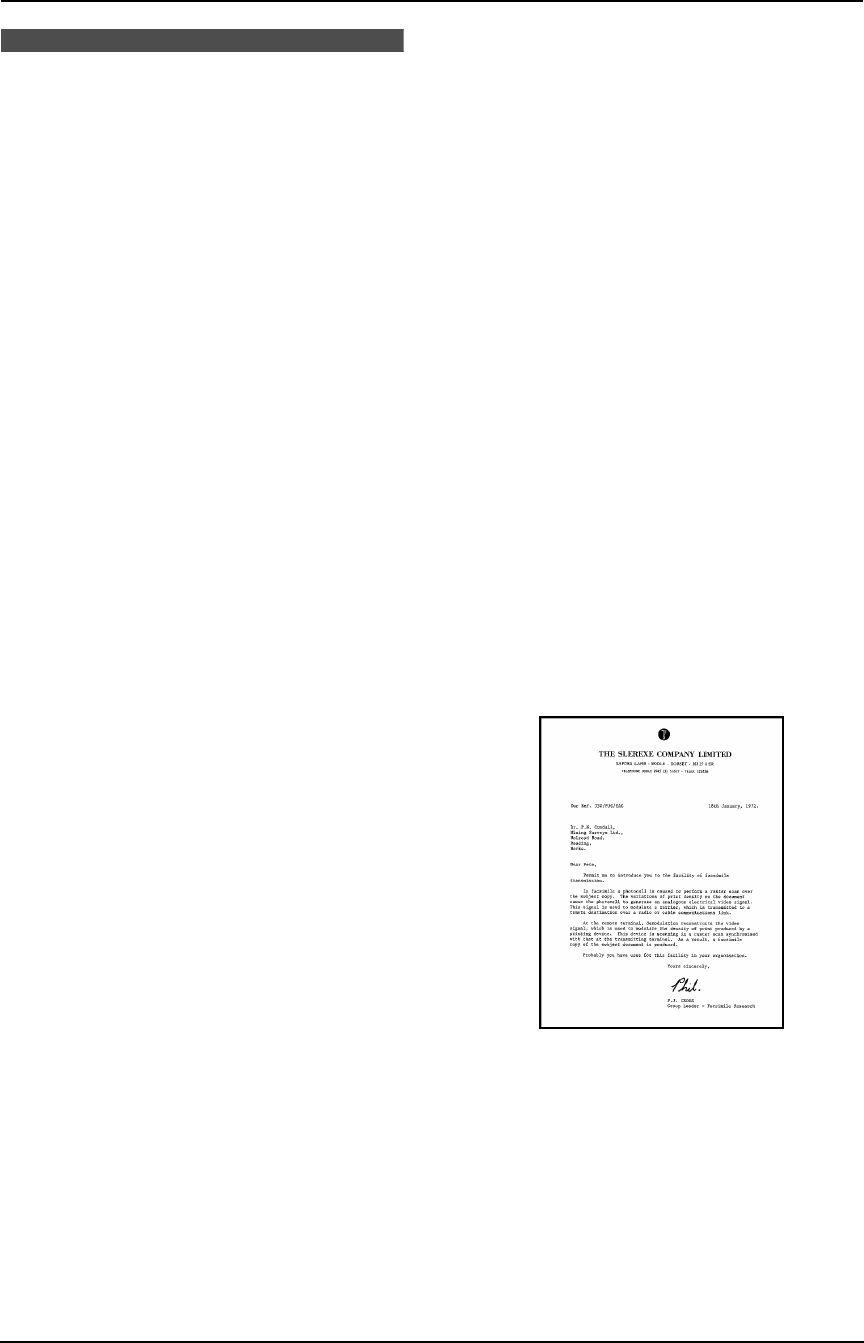
12. General Information
112
Specifications
12.2 Technical data about
this product
12.2.1 Base unit
Applicable lines:
Public Switched Telephone Network
Document size:
Max. 216 mm (8
1
/
2
") in width, Max. 600 mm
(23
5
/
8
") in length
Effective scanning width:
208 mm (8
3
/
16
")
Effective printing width:
Letter/Legal: 208 mm (8
3
/
16
")
A4: 202 mm (7
15
/
16
")
Transmission speed
*1
:
Approx. 15 s/page
*2
Scanning density:
Horizontal: 8 pels/mm (203 pels/inch)
Vertical: 3.85 lines/mm (98 lines/inch) (standard
resolution)
7.7 lines/mm (196 lines/inch) (fine/photo
resolution)
15.4 lines/mm (392 lines/inch) (super fine
resolution)
Photo resolution:
64 levels
Scanner type:
Contact Image Sensor
Printer type:
Thermal Transfer on plain paper
Data compression system:
Modified Huffman (MH), Modified READ (MR)
Modem speed:
9,600 / 7,200 / 4,800 / 2,400 bps; Automatic
Fallback
Operating environment:
5 °C – 35 °C (41 °F – 95 °F), 20 % – 80 % RH
(Relative Humidity)
Dimensions:
Approx. height 128 mm × width 324 mm × depth
242 mm (5
1
/
32
" × 12
3
/
4
" × 9
17
/
32
")
Mass (Weight):
Approx. 3.1 kg (6.8 lb.)
Power consumption:
Standby: Approx. 4.5 W
Transmission: Approx. 12 W
Reception: Approx. 50 W (When receiving a 20
% black document)
Copy: Approx. 50 W (When copying a 20 % black
document)
Maximum: Approx. 135 W (When copying a 100
% black document)
Power supply:
120 V AC, 60 Hz
Fax memory capacity
*3
:
Transmission: Approx. 25 pages
Reception: Approx. 28 pages
Voice memory capacity
*4
:
Standard recording mode: approx. 15 minutes of
recording time.
Enhanced recording mode: approx. 7 minutes of
recording time.
*1 Transmission speed varies depending on
page content, resolution, telephone line
conditions, and the other party’s machine.
*2 Transmission speed is based upon the ITU-T
No. 1 Test Chart and original mode. If the
capabilities of the other party’s machine are
inferior to your unit, the transmission speed
may be lower.
*3 If an error occurs during fax reception, such
as a paper jam or if the recording paper runs
out, the fax and subsequent faxes will be
retained in memory.
*4 Including greeting messages. Total recording
time may be reduced by the calling party’s
background noise.
ITU-T No. 1 Test Chart
FPG391_en.book Page 112 Friday, July 16, 2004 5:38 PM


















